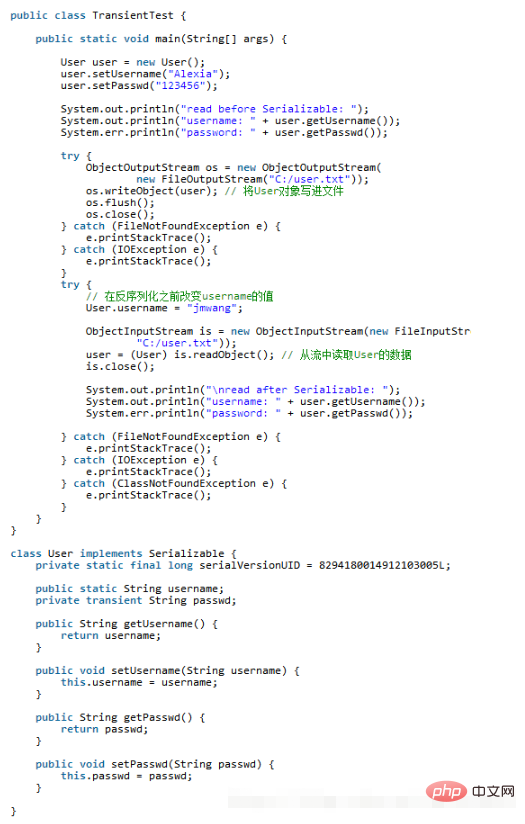
For transient-modified member variables, they will be ignored during the serialization process of the instance object of the class. Therefore, transient variables will not run through the serialization and deserialization of the object. The life cycle only exists in the caller's memory and will not be written to disk for persistence.
Serialization of objects in Java refers to converting objects into representations in the form of byte sequences. These byte sequences contain the data and information of the object. A serialized object can be written to a database or file, or used for network transmission. Generally, when we use cache (if there is not enough memory space, it may be stored locally on the hard disk) or remotely call rpc (network transmission), we often need to make the entity class implement the Serializable interface in order to make it serializable. Of course, the ultimate goal after serialization is to deserialize and restore it to the original Java object instance. Therefore, the serialized byte sequence can be restored into a Java object. This process is deserialization.
When persisting objects, we do not want to use the serialization mechanism to save some special data members (such as user passwords, bank card numbers, etc.). To turn off serialization on a member variable of a specific object, you can add the keyword transient before the member variable.
Transient is a keyword in the Java language, used to indicate that a member variable is not part of the serialization of the object. When an object is serialized, the values of transient variables are not included in the serialization result. Non-transient variables are included. Note that static variables modified by static are naturally not serializable.



(1) Once the variable is With transient modification, the variable will no longer be part of the object's persistence, and the content of the variable cannot be accessed after serialization.
(2) The transient keyword can only modify variables, but not methods and classes. Note that local variables cannot be modified by the transient keyword. If the variable is a user-defined class variable, the class needs to implement the Serializable interface.
(3) A static variable cannot be serialized regardless of whether it is modified by transient (if the static variable in the class still has a value after deserialization, the value will be the value of the corresponding static variable in the current JVM). Serialization saves object state, and static variables save class state, so serialization does not save static variables.


(1) Field values in the class can be derived based on other fields, such as A rectangle class has three attributes: length, width, and area. The area does not need to be serialized.
(2) Some security information cannot leave the JVM under normal circumstances.
(3) If a Logger instance is used in the class, the Logger instance does not need to be serialized
The above is the detailed content of How to use the transient keyword to control serialization in Java. For more information, please follow other related articles on the PHP Chinese website!




